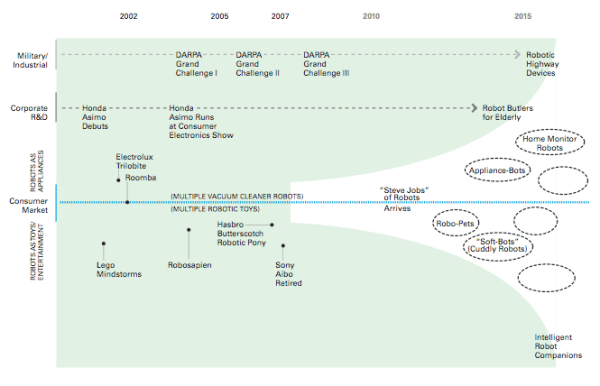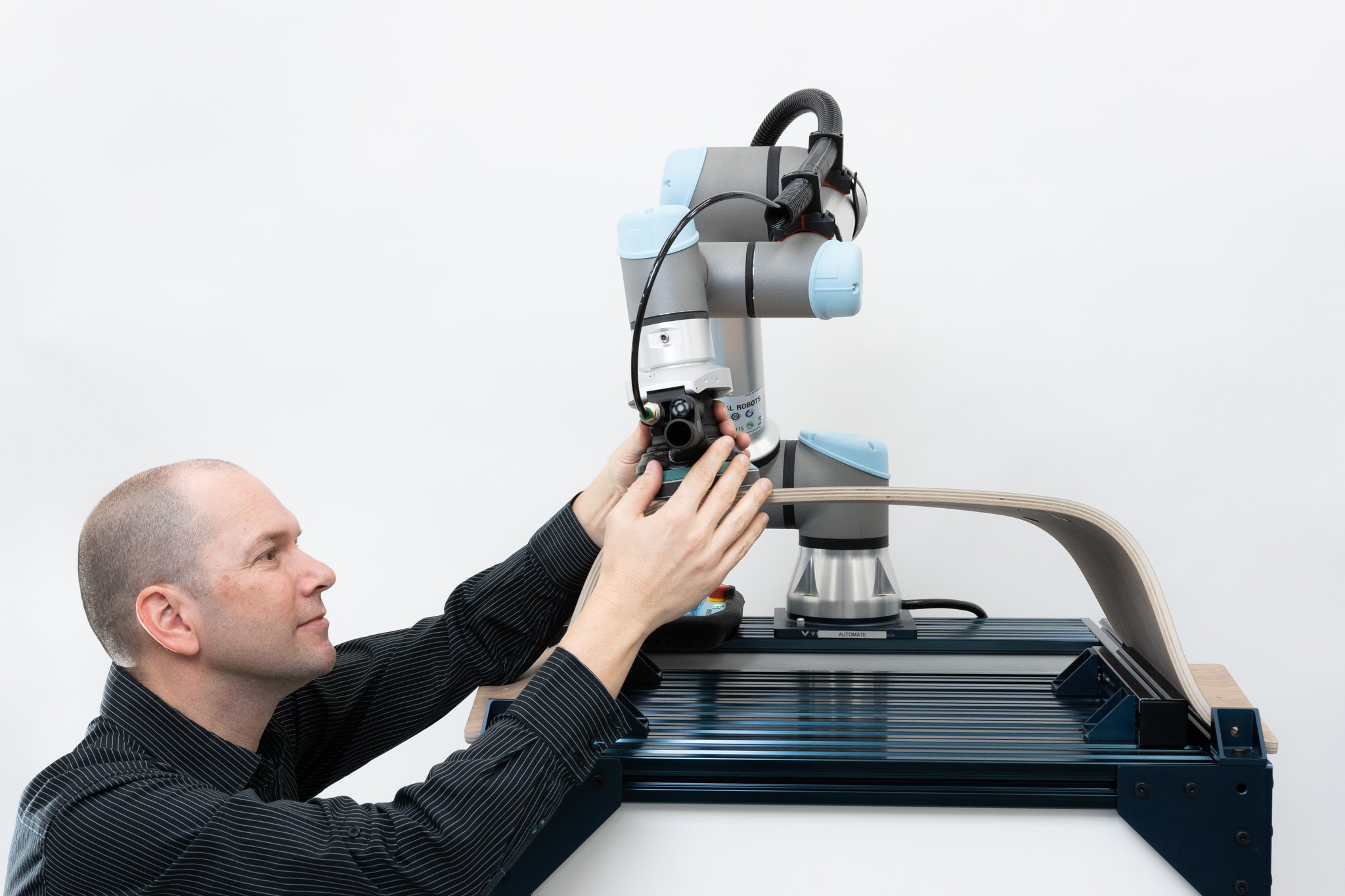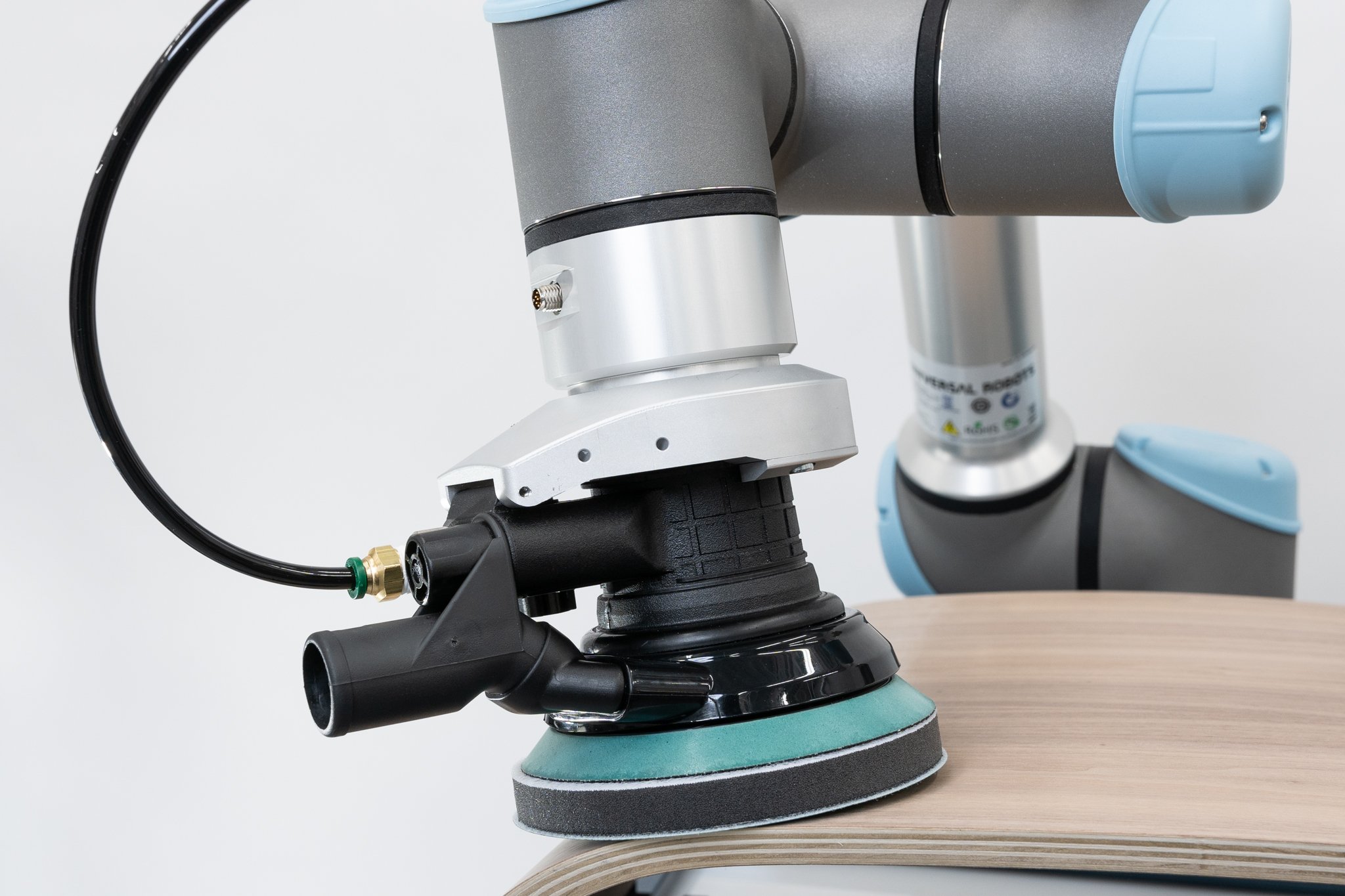Robots: the Next Big Thing? (Part 2/2)

Posted on Nov 08, 2007 3:15 PM. 5 min read time
See part 1 of this article on service robotics
COROWARE
Who presented — Lloyd Spencer, CEO
What they do — They developed Corobot, a mobile robot platform equipped with a computer, sensors and, optionally, an arm with a manipulator. Robotics is not their bread and butter. So far, their buyers are mainly in the field of education. They do a good deal of software development for Microsoft to pay the bills. Of course, they work with Microsoft Robotics Studio and have even enhanced it with extensions. Spencer is a computer industry veteran.
What they think — The CEO presented extracts from an article titled “Six Rules for Accurate Effective Forecasting” that appeared in the Harvard Business Review It is not completely accessible online but I will summarize it in the near future. It describes a method for making technological forecasts. The first step is to map a “cone of uncertainty” (click on the image to see it). One has been mapped for robotics, using as a starting point signs like the evolution of the DARPA Urban Challenge, sales of iRobot vacuum cleaners and toys, and the history of university research. Like the article’s author, Spencer sees wider applications of robotics for the general public over the next ten years. Which ones? Again, this is unclear, but early forecasts agree with Microsoft, namely simple systems with a single application and mobile information systems.

ROBOTICS TRENDS
Who presented — Dan Kara, President
What they do — Robotics Trends is an organization that disseminates information on the robotics market. They organized the conference.
What they think — They gave a good review of the present environment. They began by informing the audience that many conditions have been met or will soon be to favour the growth of service robotics:
- The technologies are available: Processors, wireless, voice recognition, simulators, sensors, tools to develop on-board systems.
- True vulnerable areas will inevitably appear. As the Y2K bug generated a great deal of IT work, the ageing population and labour shortages will be opportunities for robotics.
- The US government has announced its intention to increase the use of robotics for defence, national security and space exploration. The army is planning to automate one-third of its land combat vehicles by2015.
- University research is mature. Many robotics graduates are now on the labour market or are starting up businesses. Financing is increasingly easy to come by. Clusters of robotics ventures are arising around leading universities in the field: Pittsburgh, Boston and Silicon Valley.
One interesting point the presenter spoke of was sectors that seem ripe for service robotics. He divides them into two categories:
- Professional service robotics
- working on humans: assisted surgery, guide robots, etc.
- working on equipment: cleaning floors, pipes and windows, inspecting, repairing, etc.
- performing other autonomous functions: military, public security, handling hazardous materials, etc.
- Domestic service robotics
- entertaining and educating: intelligent toys, educational robots, hobby robots, entertainment robots.
- assisting people: household chores, improving the quality of life for people with impaired mobility, etc.
There are already profitable areas, such as drone planes, medical robots, robot vacuum cleaners and many toys.
NASA
Who presented — Terry Fong, Director of intelligent robotics
What they do — Do they really need an introduction? A great deal of high-level robotics for space missions.
What they think — They are planning to lean heavily on robotics over the coming years for a Mars mission and a lunar return. The graph below illustrates their planned budget over the near future:
As they phase out the space station and shuttle, they will begin to focus on exploratory missions with a strong robotics component and human-robot technologies. NASA is at the next stage. They are working toward robots that are not just another tool for humans, but a partner with which they can work. We’d have interactions such as “robot, check that weld, please," or a robot that tells Jim, “Jim, I don’t know what to do here, please help.” For this, they have launched the “Peer-to-Peer Human-Robot Interaction” project. The video in the link explains the project. NASA's objectives for robots are:
- Reduce the number and duration of non-productive extra-vehicular activities.
- Lighten the crew’s workload.
- Improve mission architecture, strengthen them and make them more adaptable. Planned missions and tasks for the robots are preparatory lunar missions (survey the environment, conduct experiments, deploy infrastructures), support of human missions (support the astronauts, perform repetitive, laborious tasks), maintaining a lunar base (inspection, repairs, site prep, handling, assembly, construction, etc.).
SUMMARY
Ok, these guys are all preaching to the choir (a little like me!), because they all work in robotics. Their arguments make sense, though. We can’t exactly compare the evolution of robotics with that of computers or electronics. Robotics is different from electronics and the context has changed. But, when we see how all these speakers agree that the golden age of robots is near, I am more convinced than ever that they’re right. When and how? Nobody knows for now. It is not yet clear which application will attract the general public enough to become the robotic equivalent of the next Lotus 1-2-3 or WordPerfect.
While many service robotics ventures are already profitable, we see the pieces of the puzzle come into place. We can now take several blocks and assemble them into a robot much more easily and less expensively than just five years ago. We get a sense we will soon encounter robots on a daily basis. Two main development themes will unlock vast potential:
- Standardization
Nowadays, we don’t need to be able to design and understand a processor to use a computer. Robotics should follow the same path. Components and protocols should be standardized for easy assembly. This will enable us to build on the work of others and accelerate development. - Human-robot collaboration
Building a robot isn’t everything. It will have to cope with a disorderly environment and interact with humans. This presents a number of unresolved challenges: How to make communication intuitively with a robot? How to ensure the safety of people working alongside robots? How to design them so that they are socially acceptable? These are presently the kind of questions intriguing researchers around the world.
The above themes go hand in hand with the comments I made in other articles such as today’s challenges in robotics and on the European Robots SME initiative.
We can’t predict everything, no matter how much we know. Technology always keeps some surprises up its sleeve. The imagination behind HAL in 2001: A Space Odyssey was bang on regarding the potential for the computers of the future, but overlooked the potential of transistors. HAL 9000 worked on punch cards! Likewise, the role-playing game, ShadowRun, launched at the end of the 1980s, showed people who could connect to the matrix, a kind of Internet, via a terminal. They never saw wireless coming. My son will be born in April. I am sure that when he’ll be my age, he will have a completely different view of robotics than the one I have today.








Leave a comment